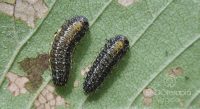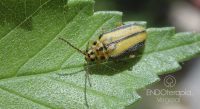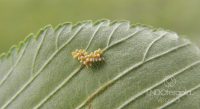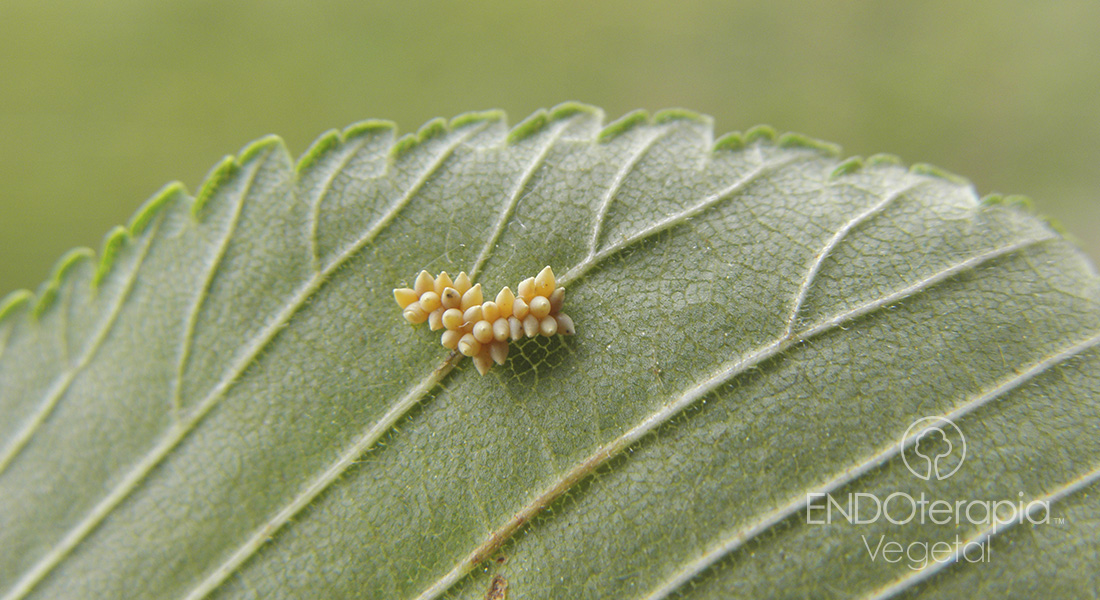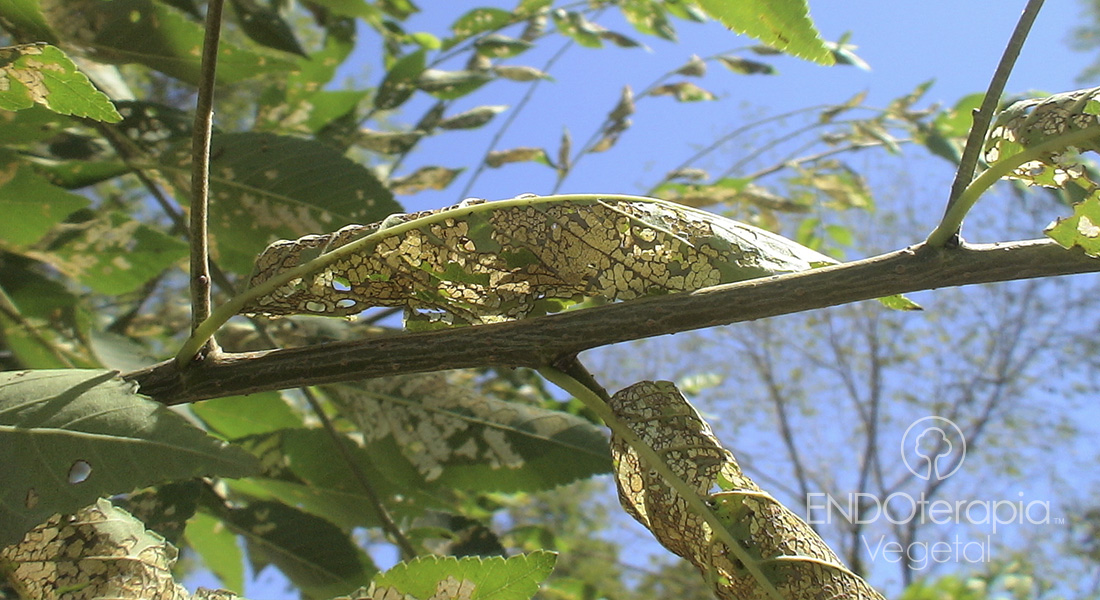Project Description
In the spring, during bud burst time, the adults who have spent the winter among the bark, in the leaf litter, for example, emerge and start to feed. They breed in a very short time and the females lay the eggs, from which the new generations of larvae will come out. They have a great voracity and complete the cycle in a few weeks. Then they go down to the ground and pupate among the leaf litter or buried at a shallow depth.
The damage caused by one or the other can be distinguished. Adults pierce the leaves, while larvae quickly devour the green parenchyma, respecting the epidermis of the adaxis; that is to say, they do not pierce the leaf but cause it to have a semi-transparent brown tone (Fig. d).
Because of this, in mid-summer, elm trees can become highly defoliated or present reduced foliage, thus decreasing vigour due to the reduction of their photosynthetic capacity.
If defoliation occurs year after year, the tree becomes very weak and susceptible to attacks by other pathogens, such as Scolytus beetles. These bark beetles transmit a fungus (Ceratocystis novo-ulmi) that is very deadly for elm trees; this disease is known as Dutch elm disease (Fig. e).
Another major drawback is that, in the event of major pest attacks, the larvae of the last instar can move in large groups towards gardens, buildings, tents, vehicles, in order to carry out the last shedding. This causes discomfort to users and citizens, and creates social alarm. Before and after hibernation, adults can also appear in high concentrations.




